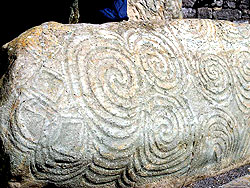This morning, I read an interesting quote from David Brooks, “While our scholastic education is formal and supervised, our emotional education, the one we glean on our own from artists and musicians, is more important to our long-term happiness.”
I had never thought about art (and music, which I include in “the arts”) as emotional education. It’s an appropriate concept, and especially important and vital in an era when values are shifting away from merit-as-price-tag and status-based evaluation.
It’s also important as we consider even more budget cuts in our schools, and how we can resolve deficit-related issues that are (or will be) affecting our daily lives… such as what our children are taught in school.
Unless we ensure that art remains in people’s educations — particularly future generations’ — they may lose sight of the importance of the arts.
 That’s already happened, and it’s one reason why so many artists struggle to survive as full-time artists.
That’s already happened, and it’s one reason why so many artists struggle to survive as full-time artists.
We’ve fallen far from the time when influential families (such as the Medicis) made certain that their communities had access to the very best art possible.
Then again, a quick glance at the actual art incorporated in architecture confirms that this has been a growing issue for centuries. When we have to mandate 1% for art, and similar programs, and compare that with the amount of visible, permanent art in the buildings we revere from the past… well, the contrast is startling.
 Whether we’re talking about the pyramids, cathedrals, or caves in France, the conversations almost always return to the art that’s part of them. In structures such as the pyramids and cathedrals, that art was permanent. It wasn’t entirely art — such as paintings and free-standing sculptures — displayed there, it was an integral part of the structure.
Whether we’re talking about the pyramids, cathedrals, or caves in France, the conversations almost always return to the art that’s part of them. In structures such as the pyramids and cathedrals, that art was permanent. It wasn’t entirely art — such as paintings and free-standing sculptures — displayed there, it was an integral part of the structure.
That’s an appropriate analogy for what’s happened to art in our society, and our values.
What will people spend money on, as an innate, knee-jerk reaction? A quick survey of the “impulse items” at the grocery store check-out line reveals what appeals to us as a society: Candy, and publications featuring unhappy gossip.
 In most households, “original art” is grade-school work temporarily housed on the front of the refrigerator.
In most households, “original art” is grade-school work temporarily housed on the front of the refrigerator.
Commercial reproductions of art (paintings and photos) aren’t the same as original art, but they’re better than nothing.
I’m not sure what it will take to restore original art — in general — as a valuable part of our everyday lives.
Yes, one can argue that some art sells for astronomically high prices, particularly at auction. However, that art is generally purchased by people whose educations — at the finest schools money can buy — as well as their home environments, taught them the value of art.
In today’s economy, when we propose additional art education in our schools, the retort is, “Yes, but who’s going to pay for it?”
My flippant response might be: The arts need a bailout (or a resurgence) more than companies realizing the logical consequences of mismanagement.
In fact, we don’t just need a resurgence of the arts… they may be vital to our future survival.
When we look at world and local headlines, the emotional toll of violence is clear. The logical (and very emotional) response to violence is, “How could anyone do that…?”
Perhaps some of those acts of violence are committed as carelessly as some people — oblivious to the love and care of a gardener — trample plants and flowers to create a “shortcut” to where they’re going.
It gets back to education. It’s not just telling people that art is valuable, it’s showing them its emotional value. And, it goes beyond a one-hour-a-week class. This kind of appreciation for art must begin in the home.
However, I’m also mindful of what’s practical. This won’t be achieved overnight, and probably not in one generation.
 We have to start somewhere.
We have to start somewhere.
In an economy defaulting to one-income households — which were the norm when I was growing up — perhaps we can take the time to volunteer as artists in the schools.
I’m aware that this sets a dangerous precedent, and school administrators may then expect art and art instruction to be provided, free of charge.
I’d counter that argument with the popularity of concerts. Because we are exposed to popular music daily on radio and TV — free of charge — people continue to place a high value on concerts.
My point is: To recover the perceived value of art, particularly the visual arts, we have to begin somewhere. We need to educate people — starting with children — about the importance of art, not just as art but as Brooks’ said, “emotional education.”
It may take a generation or two to even begin this project. However, it’s a vital project not just for artists but for our society.
You could volunteer at
- a Scout troop,
- a community center,
- a daycare center,
- a church, or
- a school.
It could be a weekly or monthly commitment — for as long as you’re able to — or a one-time event.
Whether you teach others to create art or about the arts, or take a child (your own or neighbors’) to an art gallery or museum, or read a book about art with your book club or your family, start now.
It’s not just about art, it’s about emotional education.
“Do what you can, with what you have, where you are.” — Teddy Roosevelt.
Photo credits:
Vatican columns – Sorina Bindea, Romania
Petroglyphs in Venezuela – Franklin Carrera, Venezuela
Street artist – Valentina Jori, Italy
Newgrange carvings – Jon Sullivan, US (PDPhoto.org)
You can reprint this article (and its illustrations) on your own website if you like, as long as the article remains intact and has a link back to Aisling.net.
Amazon and the Amazon logo are trademarks of Amazon.com, Inc, or its affiliates. As an Amazon Associate, I earn from qualifying purchases.